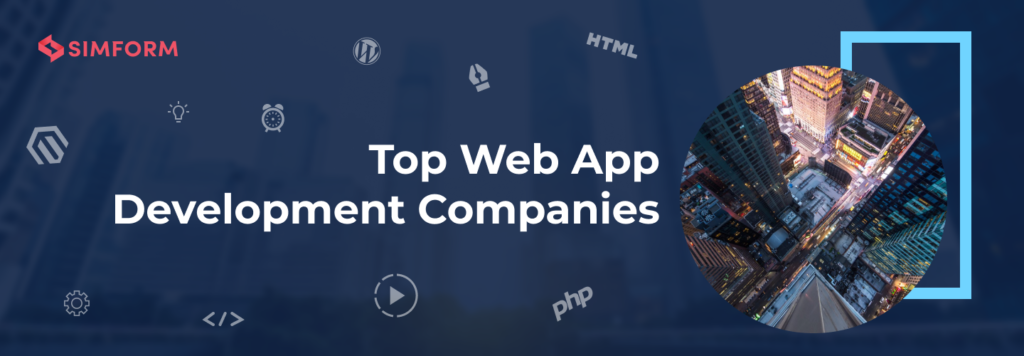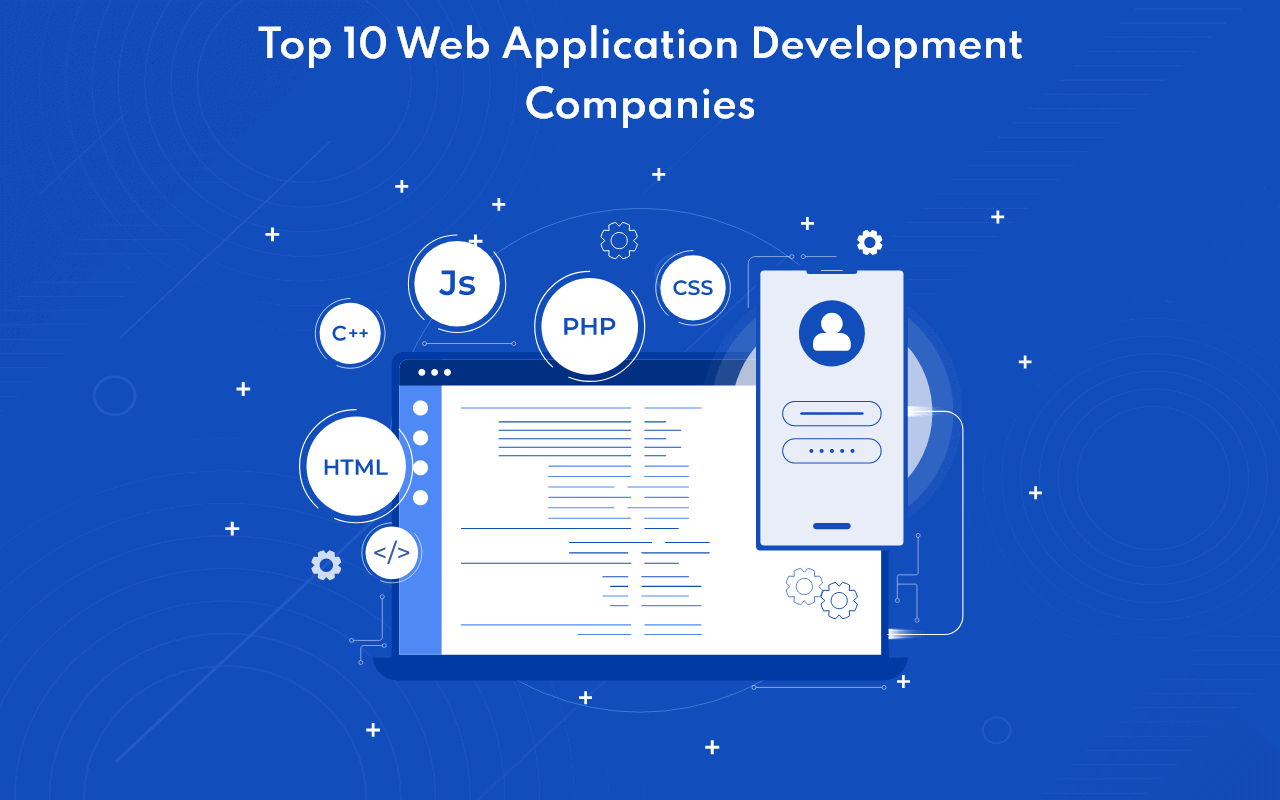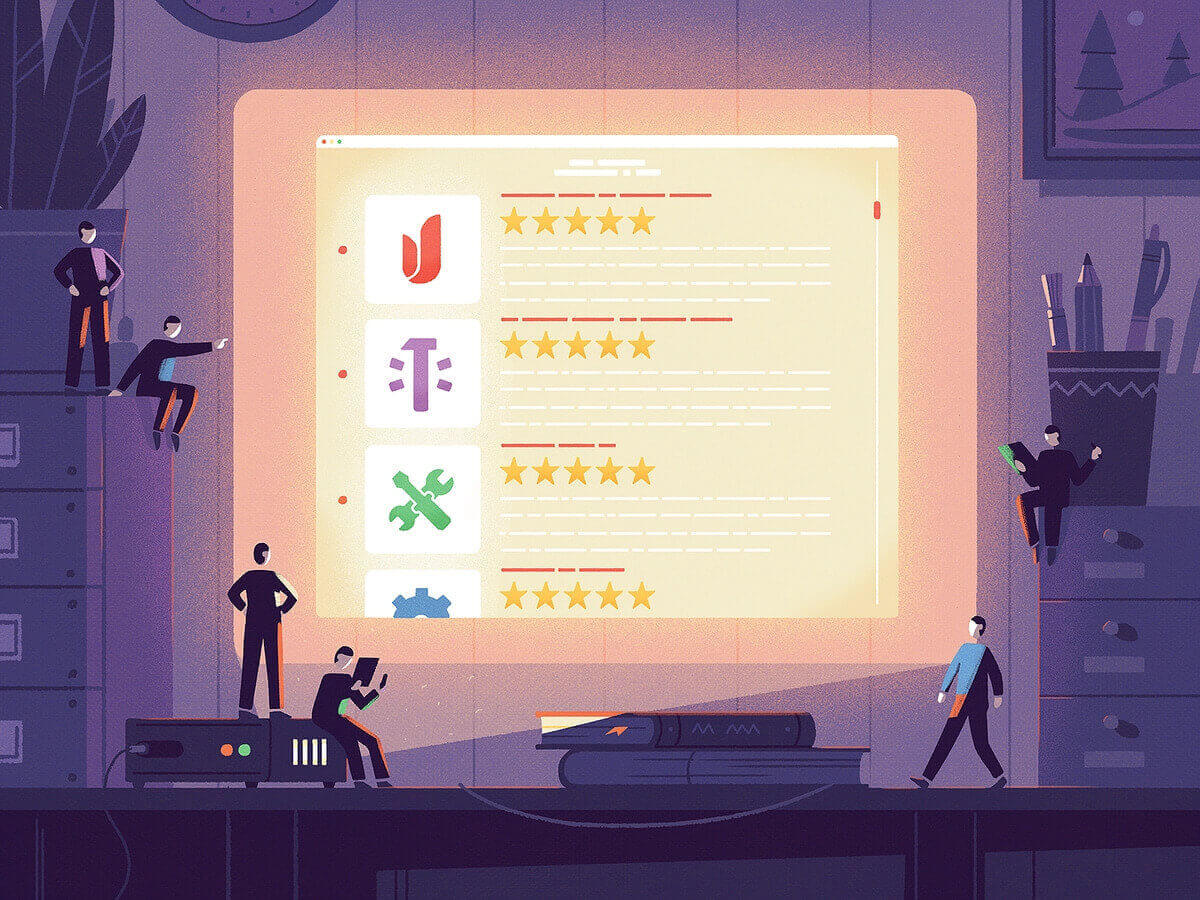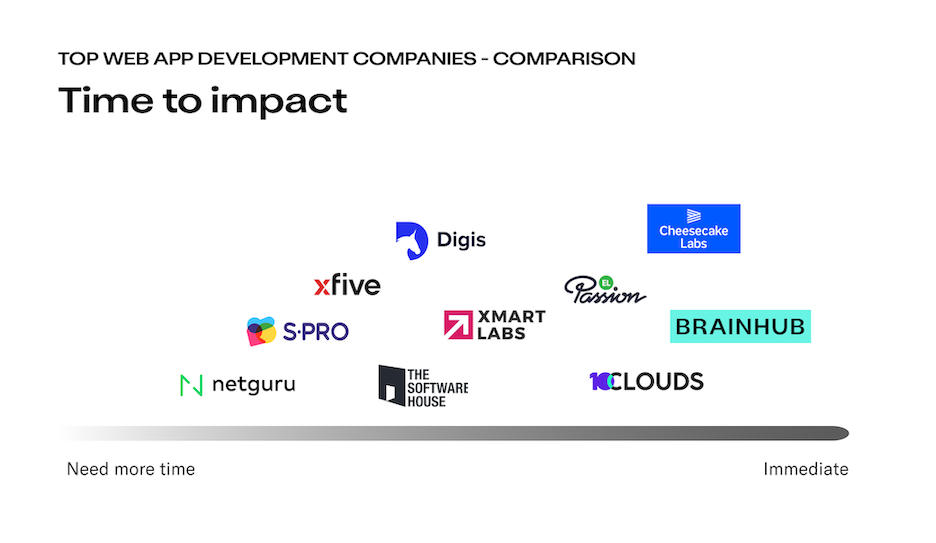Hai semuanya! Web app development companies are booming, offering innovative solutions for every need. From simple to sophisticated, these companies craft digital experiences that are both functional and beautiful. It’s a vibrant industry, full of talented people and exciting possibilities. Choosing the right company is key to success, so let’s dive in and explore the essential factors.
This comprehensive guide explores the world of web app development companies, covering everything from selecting the perfect partner to understanding pricing models. We’ll also look at the latest trends and the future of this exciting field.
Introduction to Web App Development Companies
The web app development industry is a dynamic and rapidly evolving sector, driven by the increasing demand for innovative and user-friendly applications across various industries. From simple task management tools to complex enterprise solutions, web applications are transforming how businesses operate and individuals interact with information. This evolution necessitates a robust ecosystem of companies specializing in developing, designing, and deploying these applications.
The landscape of web app development companies is diverse, encompassing various approaches and specializations. Understanding these differences is crucial for businesses seeking to partner with the right development team.
Types of Web App Development Companies
Different types of companies cater to various needs and budgets. Understanding these distinctions allows businesses to make informed decisions.
- Full-service web app development companies offer a comprehensive range of services, including design, development, testing, deployment, and maintenance. These companies typically have a diverse team of specialists, providing flexibility and a wide range of capabilities. An example would be a company that develops a mobile banking app, handling the entire process from conceptualization to launch and ongoing support.
- Specialized web app development companies focus on particular niches or technologies. For instance, companies specializing in e-commerce platforms or mobile app development often possess in-depth expertise in those specific areas. This specialization can lead to highly efficient and effective development processes.
- Web app development agencies act as intermediaries, bringing together clients and developers. They often provide project management and coordination services, ensuring the smooth execution of development projects. This approach can be advantageous for clients seeking a streamlined process, especially for smaller projects or those with limited internal resources.
- In-house web app development teams are internal departments within organizations. They possess a deep understanding of the company’s needs and priorities, enabling them to develop tailored applications. This model is ideal for organizations with significant internal development resources and specific requirements. For instance, a large corporation might have an in-house team dedicated to developing internal tools and applications.
Key Factors Influencing Company Selection
Several factors play a critical role in choosing the right web app development company. These considerations should be carefully weighed to ensure a successful project outcome.
- Technical expertise: Evaluating the company’s experience with the technologies and frameworks relevant to the project is crucial. This involves assessing their proficiency in programming languages, databases, and platforms.
- Project management capabilities: The ability of the company to manage projects effectively, meet deadlines, and communicate transparently is paramount. A strong project management approach ensures that the project stays on track and delivers the desired results.
- Portfolio and client testimonials: Reviewing the company’s past projects and client testimonials provides valuable insights into their quality of work and ability to meet client expectations. This allows businesses to gauge their past performance and customer satisfaction.
- Communication and collaboration style: A company’s communication and collaboration style is essential for smooth project execution. Open communication channels and a collaborative approach are critical for success.
- Budget and pricing models: Different companies employ various pricing models, so understanding these differences and aligning them with the project budget is essential. This involves scrutinizing the pricing structure and ensuring that it aligns with the overall project budget.
Common Services Offered by Web App Development Companies
Web app development companies offer a range of services to support the entire application lifecycle.
- Requirements gathering and analysis: This crucial initial step involves understanding the client’s needs and defining the scope of the project. Thorough requirements gathering ensures the application meets the specific needs of the client.
- Design and prototyping: Visualizing the application through user interface (UI) and user experience (UX) design is vital. Prototyping allows for testing and feedback before significant development begins.
- Development and implementation: The actual coding and programming to bring the application to life are conducted at this stage. This process involves selecting appropriate technologies, adhering to coding standards, and ensuring the application is robust and scalable.
- Testing and quality assurance: Rigorous testing is essential to identify and resolve bugs and ensure the application functions as intended. Comprehensive testing guarantees a high-quality final product.
- Deployment and maintenance: Once the application is tested and approved, deployment to the appropriate platform is critical. Ongoing maintenance, including bug fixes, security updates, and performance improvements, is also vital.
Factors to Consider When Choosing a Web App Development Company

Selecting the right web application development company is crucial for the success of your project. A poorly chosen partner can lead to delays, cost overruns, and a final product that doesn’t meet your needs. Thorough research and careful evaluation are essential steps in this process.
Understanding your project’s specific requirements, evaluating the company’s expertise and experience, and establishing clear communication channels are vital for a successful outcome. Furthermore, examining a company’s portfolio, understanding pricing models, and comparing different company types are equally important considerations.
Understanding Project Requirements
Clearly defining your project’s needs is paramount. This involves outlining functionalities, target users, technical specifications, and desired outcomes. A comprehensive understanding of your requirements will enable you to evaluate potential partners more effectively. A detailed project specification document, outlining features, functionalities, and technical specifications, is a crucial tool.
Evaluating Company Expertise and Experience
Assessing a company’s expertise and experience is critical. Look for a team with proven experience in developing similar applications, especially in technologies relevant to your project. Relevant industry certifications, successful case studies, and testimonials from previous clients are strong indicators of a company’s competence. Consider asking for portfolios or case studies showcasing similar projects. Inquire about the company’s team composition, including developers, designers, project managers, and QA specialists.
Ensuring Clear Communication and Project Management
Effective communication and project management are essential for a successful development process. Establish clear communication channels and expectations from the outset. Look for companies that provide regular updates, address concerns promptly, and maintain transparency throughout the project lifecycle. Inquire about their project management methodologies and how they ensure timely delivery.
Analyzing Portfolio and Past Projects
A company’s portfolio and past projects provide valuable insights into their capabilities. Review case studies, client testimonials, and project examples to gauge their proficiency and understand their strengths and weaknesses. Seek examples of applications with similar features and functionalities to your project. Look for projects that demonstrate the company’s ability to handle complex projects and deliver high-quality results.
Comparing Pricing Models
Various pricing models exist for web application development services. Understanding these models is crucial for making informed decisions. Fixed-price contracts offer predictability but may not accommodate unforeseen complexities. Hourly rates provide flexibility but can be unpredictable in cost. Value-based pricing models align costs with project value, which can be beneficial for complex projects. Evaluate the pros and cons of each model based on your project’s scope and requirements.
Comparing Company Types
Choosing between freelancers, agencies, and other development options requires careful consideration.
| Company Type | Pros | Cons |
|---|---|---|
| Freelancers | Potentially lower costs, flexibility, direct communication | Limited resources, potential lack of project management expertise, inconsistent quality, less accountability. |
| Agencies | Access to diverse skill sets, project management support, established processes, greater accountability, potential for better quality control | Higher costs, potentially slower communication channels, less flexibility, potential for bureaucracy. |
Key Services Offered by Web App Development Companies

Choosing the right web application development company is crucial for the success of your project. Understanding the range of services they offer is paramount to making an informed decision. Beyond basic development, successful web apps require a comprehensive approach encompassing user experience, security, scalability, and rigorous testing.
Essential Services
Web application development companies typically offer a suite of services tailored to meet diverse project needs. This spectrum of services encompasses everything from initial design and planning to ongoing maintenance and support. Understanding these essential services empowers you to evaluate a company’s capabilities and align them with your project requirements.
- Project Planning and Design: This initial phase involves defining project scope, outlining functionalities, and creating wireframes and mockups. Clear project planning ensures alignment with client expectations and minimizes potential deviations during development.
- Front-End Development: This involves building the user interface (UI) and ensuring a seamless user experience. Front-end developers are responsible for creating the visual aspects of the application, using technologies like HTML, CSS, and JavaScript.
- Back-End Development: This encompasses the server-side logic, database management, and application programming interfaces (APIs). Back-end development is crucial for data processing, security, and application functionality.
- Database Management: Designing, implementing, and maintaining the database structure is vital for data storage and retrieval. Appropriate database selection and management ensures data integrity and efficiency.
- API Development: Creating application programming interfaces allows external systems to interact with the web application. APIs enable seamless integration with other services and systems.
- Testing and Quality Assurance (QA): Rigorous testing throughout the development lifecycle ensures the application functions as expected and meets quality standards. Testing encompasses unit, integration, and user acceptance testing.
- Deployment and Maintenance: Deployment involves making the application accessible to users. Ongoing maintenance includes bug fixes, updates, and enhancements.
User Experience (UX) Design and Development
Exceptional user experience is paramount in web application development. UX design focuses on creating intuitive, user-friendly interfaces. A positive UX enhances user engagement, improves satisfaction, and ultimately drives application success. UX design considers factors like navigation, information architecture, and visual design to achieve a seamless user experience.
Security and Scalability
Security is crucial for protecting sensitive data and maintaining user trust. Scalability ensures the application can handle increasing user loads and data volumes as the application grows. Robust security measures and scalable architecture are essential for long-term success. Security protocols such as encryption and access controls are crucial for maintaining data integrity.
Quality Assurance and Testing
Thorough testing is essential to identify and resolve bugs and defects before the application’s launch. Quality assurance involves rigorous testing throughout the development lifecycle. Testing encompasses various stages, including unit, integration, and user acceptance testing. Comprehensive testing minimizes errors and ensures a high-quality product.
Technologies and Frameworks
Web application development leverages a variety of technologies and frameworks. Popular choices include React, Angular, Vue.js for front-end development, and Node.js, Python (with frameworks like Django or Flask), Ruby on Rails for back-end development. Choosing the right technologies depends on project requirements and team expertise.
Service Comparison Table
| Service | Description | Importance |
|---|---|---|
| Project Planning & Design | Defining project scope, functionalities, and creating wireframes. | Ensures alignment with client needs and minimizes development deviations. |
| Front-End Development | Building the user interface (UI) for a seamless user experience. | Creates a visually appealing and intuitive user interface. |
| Back-End Development | Server-side logic, database management, and APIs. | Handles data processing, security, and application functionality. |
| Database Management | Designing, implementing, and maintaining database structure. | Ensures data integrity, retrieval efficiency, and scalability. |
| Testing and QA | Rigorous testing throughout the development lifecycle. | Identifies and resolves bugs, ensuring a high-quality product. |
| Deployment & Maintenance | Making the application accessible to users and ongoing support. | Ensures application availability and continuous improvement. |
Evaluating Company Portfolios and Case Studies
Scrutinizing a web app development company’s portfolio and case studies is crucial for assessing their capabilities and understanding their track record. A well-curated portfolio provides tangible evidence of past successes, showcasing the company’s expertise and ability to deliver on client needs. Thorough analysis of case studies allows you to delve deeper into specific projects, gaining insights into their problem-solving approaches, technical skills, and overall project management.
Evaluating a company’s portfolio and case studies provides valuable insights into their proficiency and suitability for your project. This evaluation process should go beyond simply looking at aesthetics and focus on practical details. By scrutinizing the specifics of their projects, you can gain a more comprehensive understanding of their strengths and weaknesses, ultimately making a more informed decision.
Analyzing Company Portfolios
A company’s portfolio acts as a visual representation of their past work, offering a glimpse into their project diversity and technical proficiency. A well-structured portfolio showcases a variety of projects, each demonstrating a different aspect of the company’s capabilities. Look for a portfolio that clearly categorizes projects by type, functionality, or industry, facilitating quick identification of relevant projects for comparison with your needs.
Examining Case Studies
Case studies provide detailed insights into specific projects, revealing the challenges faced, solutions implemented, and results achieved. A robust case study should present a clear problem statement, outlining the specific needs and pain points of the client. It should then articulate the solution proposed by the development company, detailing the technical approach and key features implemented. Finally, the case study should quantify the results, demonstrating the tangible value delivered to the client. Examples include increased efficiency, improved user engagement, or cost savings.
Key Elements in Case Studies
- Problem Statement: A concise description of the client’s challenges or needs. This should be clear and specific, avoiding vague language. For example, instead of “Improved efficiency,” a strong statement would be “Increased order processing speed by 25% through streamlined workflow automation.”
- Solution Description: A detailed explanation of the proposed solution, highlighting the technical approach and key functionalities developed. This section should be comprehensive enough to understand the complexities involved. For example, instead of “Built a new website,” a better description would be “Developed a responsive e-commerce platform with a custom payment gateway integration, a robust inventory management system, and a streamlined customer support portal.”
- Quantifiable Results: Demonstrating the tangible value delivered to the client through metrics and data. This includes specific improvements in areas like user engagement, sales conversions, or operational efficiency. For example, “Increased website traffic by 30% within the first quarter of launch, resulting in a 15% boost in sales.”
Client Testimonials and Reviews
Positive client testimonials and reviews provide crucial social proof, reinforcing the company’s credibility and client satisfaction. Look for testimonials that highlight the company’s communication skills, project management capabilities, and technical expertise. Genuine testimonials, offering specific examples of positive interactions, build trust and confidence in the company’s ability to manage your project effectively.
Comparative Analysis of Case Studies
| Case Study | Functionality | Complexity | Technology Stack |
|---|---|---|---|
| E-commerce Platform for a Clothing Retailer | Online store with inventory management, order processing, and customer support | High | React, Node.js, MongoDB |
| Mobile App for Task Management | Scheduling, task assignment, and collaboration tools | Medium | Flutter, Firebase, Cloud Functions |
| Custom CRM System for a Real Estate Agency | Lead management, client tracking, and property management | High | Python, Django, PostgreSQL |
This table provides a basic framework for comparing case studies based on their specific functionalities and complexity. This allows you to gauge the company’s proficiency across various project types and technical domains.
Analyzing Pricing Models and Contracts
Choosing the right pricing model and meticulously reviewing the contract are crucial steps in securing a successful web application development project. Understanding the different pricing structures and the nuances of contractual agreements can save you significant headaches and potential financial pitfalls down the line. A transparent and well-defined agreement fosters trust and ensures both parties are aligned on expectations and responsibilities.
Navigating the complexities of web application development pricing can be challenging. Different models cater to various project needs and budgets, but a thorough understanding of each is essential for making informed decisions. Likewise, a contract should be more than just a legal document; it should act as a roadmap for the entire project, outlining responsibilities, timelines, and potential contingencies.
Pricing Models Explained
Various pricing models exist for web application development, each with its own advantages and disadvantages. Understanding these models is key to selecting the best fit for your project. Fixed-price models offer predictability, while hourly models provide flexibility, and project-based models combine elements of both. Choosing the right model hinges on the scope of the project, the desired level of control, and your budget.
- Fixed-Price Model: This model sets a predetermined price for the entire project, providing clarity and predictability. It’s ideal for projects with well-defined requirements and a clear scope of work. However, unforeseen challenges or scope creep can impact the budget.
- Hourly Model: This model charges for each hour of development time. It offers greater flexibility for projects with evolving requirements. However, tracking time meticulously is critical to prevent cost overruns, and accurately estimating the total hours required can be challenging.
- Project-Based Model: This model combines elements of fixed-price and hourly models. It Artikels a defined scope of work within a project, but allows for adjustments within agreed-upon parameters. This hybrid approach aims to balance predictability and flexibility.
Importance of Clear Contracts
A well-drafted contract is paramount to a successful web application development project. It serves as a legally binding agreement between the development company and the client, outlining the project’s scope, timelines, payment terms, and dispute resolution mechanisms. Clear and concise language is crucial to avoid ambiguities and misunderstandings.
Contract Clauses and Implications
A comprehensive contract should cover a range of critical clauses. Here’s a breakdown of common clauses and their implications:
| Clause | Implications |
|---|---|
| Scope of Work | Defines the project’s deliverables, features, and functionalities. A detailed scope minimizes future disputes and clarifies expectations. |
| Timeline | Artikels project milestones and deadlines. Realistic timelines are crucial to prevent delays and maintain project momentum. |
| Payment Terms | Specifies payment schedules and methods. Clear payment terms minimize financial uncertainties and maintain a healthy working relationship. |
| Intellectual Property Rights | Defines ownership of the developed software. Clearly defined IP rights protect both parties’ interests. |
| Dispute Resolution | Artikels procedures for resolving conflicts. Having a dispute resolution mechanism can help mitigate conflicts and prevent costly legal battles. |
Hidden Costs in Web App Development
While the initial quote might seem attractive, potential hidden costs can significantly impact the project’s budget.
- Scope Creep: Unforeseen requirements or changes in specifications can inflate the project’s scope and cost. Clearly defining the initial scope of work is crucial to prevent scope creep.
- Technical Debt: Shortcuts or inefficient coding practices can lead to technical debt, requiring additional resources for future maintenance and upgrades.
- Testing and Quality Assurance: Comprehensive testing is often overlooked, but it’s essential for ensuring the application’s stability and functionality. Adequate testing resources and procedures can prevent future issues.
- Maintenance and Support: Long-term maintenance and support are crucial for ensuring the application’s longevity. Incurring costs for ongoing maintenance is a significant consideration.
Trends and Future of Web App Development Companies

The landscape of web application development is constantly evolving, driven by emerging technologies and shifting user expectations. Staying ahead of the curve is crucial for web app development companies to remain competitive and deliver innovative solutions. This section explores the key trends shaping the future of web app development.
The future of web application development is intertwined with advancements in technology. New frameworks, programming languages, and tools are constantly being introduced, demanding a continuous learning curve for developers. Companies that embrace these changes and invest in upskilling their teams will be best positioned to capitalize on emerging opportunities.
Emerging Technologies and Their Impact
The rapid evolution of technologies like Artificial Intelligence (AI), Machine Learning (ML), and the Internet of Things (IoT) is profoundly impacting web app development. AI-powered chatbots and personalized recommendations are transforming user experiences. ML algorithms are enabling more intelligent and efficient web applications. IoT integration is creating connected and interactive experiences. Companies that integrate these technologies effectively will be able to create cutting-edge applications.
Mobile-First Design and Responsive Development
Mobile-first design and responsive development are paramount for creating accessible and user-friendly web applications. Users increasingly access websites and apps through mobile devices, making mobile-first design crucial. Responsive development ensures that the application adapts seamlessly to various screen sizes and devices, providing an optimal experience for all users. This approach is essential for companies aiming to reach a broader audience and maintain user engagement.
Future of Web App Development and Related Trends
Several key trends will shape the future of web app development. Progressive Web Apps (PWAs) are gaining popularity, offering a hybrid approach that combines the best of web and mobile applications. Serverless computing is enabling faster development cycles and reduced infrastructure costs. Cloud-based development platforms are becoming increasingly common, providing scalability and accessibility. Companies that adapt to these emerging trends will have a significant advantage in the market. For example, a company offering a PWA for a retailer will have a better user experience than a traditional website, as PWAs often provide faster loading times and seamless mobile experiences.
Predicted Growth and Demand for Web App Development Skills
| Skill Area | Predicted Growth Rate (%) | Demand Outlook |
|---|---|---|
| AI-powered web applications | 25-35 | High |
| Mobile-first development | 20-25 | High |
| Serverless computing | 15-20 | Medium-High |
| Cloud-based development | 10-15 | High |
| Cybersecurity for web apps | 18-22 | Very High |
This table illustrates the anticipated growth and demand for various web app development skills. The high growth rates for AI-powered and mobile-first development highlight the importance of adapting to these trends. Strong cybersecurity skills are also increasingly important, given the growing threat of cyberattacks on web applications. The need for specialized skills in these areas will continue to increase, driving the need for skilled professionals.
Illustrative Examples of Web Applications

Understanding the diverse applications of web technology is crucial for selecting the right development approach. This section provides tangible examples of web applications, showcasing their functionalities, underlying technologies, and user interfaces. These examples highlight the wide range of possibilities within web development and can inspire innovative solutions for your own projects.
Beyond simple websites, web applications offer dynamic experiences, from streamlined workflows to engaging user interfaces. The examples below demonstrate how web applications can be tailored to various needs, from personal use to complex business processes.
E-commerce Platforms
E-commerce platforms are crucial for businesses seeking online sales channels. They facilitate online product browsing, secure payment processing, and order management.
- A typical e-commerce platform allows users to browse products, add items to a shopping cart, proceed to checkout, and manage orders. The platform typically integrates with payment gateways for secure transactions.
- Secure payment processing is critical for e-commerce. Platforms often use encryption and secure protocols (like HTTPS) to protect sensitive customer data. Robust fraud detection mechanisms also help mitigate risks.
- Detailed order tracking and customer support are vital components of a successful e-commerce platform. Users should be able to track their orders and contact customer service if needed.
Social Media Platforms
Social media applications connect users globally, facilitating communication, information sharing, and community building.
- Social media applications provide features for creating profiles, sharing posts (text, images, videos), interacting with others through comments and likes, and participating in groups.
- Data management is crucial for social media platforms, which require efficient storage and retrieval mechanisms for vast amounts of user-generated content and user data. Scalability is key to handling increasing user traffic and content.
- Robust security measures are necessary to protect user accounts, prevent unauthorized access, and maintain the integrity of user data. Mechanisms to prevent spam and malicious content are also critical.
Project Management Tools
Project management tools streamline workflows, facilitate collaboration, and enhance productivity in teams.
- Project management applications typically include features for task assignment, deadlines, progress tracking, and communication tools (e.g., chat, email). Different roles (project manager, team members) can access and interact with project information based on their permissions.
- Integration with other applications (e.g., calendars, file sharing services) is often a key aspect of project management tools, improving workflow efficiency.
- Reporting features enable project managers to track progress, identify potential bottlenecks, and make data-driven decisions. This allows for effective monitoring and control of projects.
Online Learning Platforms
Online learning platforms offer flexible and accessible educational resources.
- Online learning platforms offer courses, modules, and learning materials. Interactive features like quizzes, discussions, and video lectures enhance engagement and learning experiences.
- Platforms often integrate with payment systems to manage course enrollment and facilitate online transactions. Secure access controls are essential to maintain the integrity of learning materials and user data.
- The user interface (UI) and user experience (UX) are paramount in online learning platforms, with clear navigation, intuitive design, and mobile responsiveness being crucial for learner convenience.
Best Practices for Collaboration and Communication

Effective collaboration and communication are crucial for successful web application development. Clear channels, consistent updates, and a shared understanding of project goals are vital for avoiding delays and ensuring a positive client experience. Misunderstandings and misaligned expectations can quickly derail a project, leading to costly revisions and wasted time. Proactive communication minimizes these risks and fosters a productive partnership.
Open communication channels, established timelines, and regular feedback loops are essential components of successful web application development projects. They ensure that all parties are on the same page, enabling the development team to deliver a product that meets the client’s needs and expectations. This is crucial for projects of any scale.
Strategies for Managing Project Timelines and Expectations
Establishing clear project timelines and realistic expectations from the outset is fundamental to success. These timelines should be documented, reviewed, and agreed upon by both the client and the development team. This shared understanding minimizes the risk of scope creep and allows for proactive adjustments as needed. Regular checkpoints and progress updates help maintain alignment and ensure that the project stays on track. For instance, a detailed project schedule with milestones and deadlines can be shared with the client, allowing them to anticipate progress and track the project’s advancement.
Importance of Regular Progress Updates and Feedback Loops
Regular progress updates, delivered in a timely and transparent manner, are vital for maintaining client engagement and ensuring the project aligns with expectations. These updates should provide a concise summary of completed tasks, upcoming activities, and any potential roadblocks. A well-structured feedback loop, where both the client and the development team can provide input, allows for iterative improvement and ensures that the final product meets the highest standards. Feedback should be solicited from the client at key stages of development to ensure that the application meets their specific needs.
Communication Channels and Best Uses
Effective communication relies on choosing the right channels for different purposes. A well-structured communication strategy leverages various methods for optimal clarity and efficiency.
| Communication Channel | Best Use Case |
|---|---|
| Formal communication, project updates, document sharing, and general correspondence. | |
| Project Management Software (e.g., Asana, Trello, Jira) | Task assignments, progress tracking, and collaboration on specific project tasks. |
| Video Conferencing (e.g., Zoom, Google Meet) | Discussions requiring visual interaction, presentations, and brainstorming sessions. |
| Instant Messaging (e.g., Slack, WhatsApp) | Quick questions, status updates, and informal discussions. |
| Dedicated Client Portal | Centralized access to project documents, progress reports, and communication history. |
Wrap-Up
Choosing the right web app development company is crucial for any project. Understanding their services, evaluating their portfolios, and analyzing pricing models are essential steps. By considering these factors, you can make informed decisions and ensure a successful outcome. So, go forth and create your dream web application!





